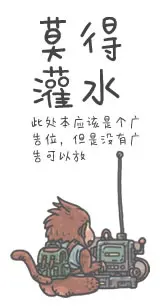A Real Example: Understanding e
實例:理解e
Understanding the number e has been a major battle. e appears all of science, and has numerous definitions, yet rarely clicks in a natural way. Let’s build some insight around this idea. The following section will have several equations, which are simply ways to describe ideas. Even if the equation is gibberish, there’s a plain-english idea behind it.
理解數字e一直以來都是困難的。e出現在科學的各個分支中,有無數個定義,但卻很少以一種自然的方式出現。讓我們來建立對它的直觀。下面的部分有幾個等式,可以用來簡單描述一些概念。哪怕等式看上去像胡扯,我們仍然能發現它背后的簡明理解。
Here’s a few popular definitions of e:
一些e的定義(圖在后面):
The first step is to find a theme. Looking at e’s history, it seems it has something to do with growth or interest rates. e was discovered when performing business calculations (not abstract mathematical conjectures) so “interest” (growth) is a possible theme.
首先是找到實質。看看e的歷史,它總是和增長與利率有關。e是在做商業計算時被發現的,而不是抽象的數學概念所以利率,或稱增長,也許是它的核心。
Let’s look at the first definition, in the upper left. The key jump, for me, was to realize how much this looked like the formula for compound interest. In fact, it is the interest formula when you compound 100% interest for 1 unit of time, compounding as fast as possible.
首先看看它最初的定義。在這個圖的左上角。對我而言,關鍵是看出這個東西與復利計算公式有幾分相似。實際上,這就是你以100%的利率在單位時間內獲得的利息公式。
Definition 1: Define e as 100% compound growth at the smallest increment possible.
定義1:(我沒法描述這句,丟人.jpg→是山寨gpt給的翻譯)將e定義為在最小增量上以100%的復利增長。
Let’s look at the second definition: an infinite series of terms, getting smaller and smaller. What could this be?
看看第二個定義:無窮的多項式,而且越來越小。這又是個什么?
\displaystyle{e = {1 \over 0!} + {1 \over 1!} + {1 \over 2!} + {1 \over 3!} + \cdots}
After noodling this over using the theme of “interest” we see this definitions shows the components of compound interest. Now, insights don’t come instantly — this insight might strike after brainstorming “What could 1 + 1 + 1/2 + 1/6 + …” represent when talking about growth?”
用之前我們找到的"利率"的概念來艱難地理解這個,它顯示了這概念的組成。但是靈感還沒有來。也許在頭腦風暴后就會來了:"談論增長時,1 + 1 + 1/2 + 1/6 + …代表什么?"
Well, the first term (1 = 1/0!, remembering that 0! is 1) is your principal, the original amount. The next term (1 = 1/1!) is the “direct” interest you earned — 100% of 1. The next term (0.5 = 1/2!) is the amount of money your interest made (“2nd level interest”). The following term (.1666 = 1/3!) is your “3rd-level interest” — how much money your interest’s interest earned!
好吧,首項(0!=1)是你的本金。第二項是你"直接"的利息。100%的1。第三項是你的利息的利息。第四項是你利息的利息!
Money earns money, which earns money, which earns money, and so on — the sequence separates out these contributions.There’s much more to say, but that’s the “growth-focused” understanding of that idea.
錢生錢,錢生錢生錢——這個多項式展現了它們各自的貢獻。這里還能作文章,但是這個概念的核心理解就是"增長"。
Definition 2: Define e by the contributions each piece of interest makes
定義2:e是每一份利息做出的貢獻。
Neato.
好。
Now to the 3rd, and shortest definition. What does it mean? Instead of thinking “derivative” (which turns your brain into equation-crunching mode), think about what it means. The feeling of the equation. Make it your friend.
現在是第三個,最短的定義。它是什么?別再想導數了,你的大腦會進入方程計算模式。想想它的意義。方程的感覺。讓它成為你的朋友。
\displaystyle{\fracvq7ohtf{dx}Blah = Blah}
It’s the calculus way of saying “Your rate of growth is equal to your current amount”. Well, growing at your current amount would be a 100% interest rate, right? And by always growing it means you are always calculating interest — it’s another way of describing continuously compound interest!
它以微積分的形式講述了"你的增長速率等于你現在的量"。以你現在的量增長,當然就是100%的利率吧?而且它永遠在增長,你就得永遠計算利息——另一種描述復利的方式!
Definition 3: Define e as a function that always grows at 100% of your current value
定義3:定義e為一個永遠以你當前的量翻倍的方式增長的函數
Nice — e is the number where you’re always growing by exactly your current amount (100%), not 1% or 200%.
好——e是精確描述你以當前的量的100%增長的數字,不是1%也不是200%。
Time for the last definition — it’s a tricky one. Here’s my interpretation: Instead of describing how much you grew, why not say how long it took?
來到最后一個定義——這個很麻煩。這是我的理解:為什么不用增長的時間(次數)來替代增長量?
If you’re at 1 and growing at 100%, it takes 1 unit of time to get from 1 to 2. But once you’re at 2, and growing 100%, it means you’re growing at 2 units per unit time! So it only takes 1/2 unit of time to go from 2 to 3. Going from 3 to 4 only takes 1/3 unit of time, and so on.
你從1開始,增長率100%,需要一次增長才能到2。但一旦你增長到2,你就能每次增長2!所以只需要二分之一的次數增長到3。從3到4只需要三分之一的次數,以此類推。
The time needed to grow from 1 to A is the time from 1 to 2, 2 to 3, 3 to 4… and so on, until you get to A. The first definition defines the natural log (ln) as shorthand for this “time to grow” computation.
從1到A的次數是從1到2,2到3,3到4…直到增長到A。第一個定義就將自然對數㏑以縮寫的方式表示了增長次數。
ln(a) is simply the time to grow from 1 to a. We then say that “e” is the number that takes exactly 1 unit of time to grow to. Said another way, e is is the amount of growth after waiting exactly 1 unit of time!
lnA正是從1增長到A所需的次數。我們就可以說,e是一次增長會增長出的量。換句話說,e就是一次增長的數量的極限!
Definition 4: Define the time needed to grow continuously from 1 to a as ln(a). e is the amount of growth you have after 1 unit of time.
定義4:(和上面的表述一樣,偷個懶)
Whablamo! These are four different ways to describe the mysterious e. Once we have the core idea (“e is about 100% continuous growth”), the crazy equations snap into place — it’s possible to translate calculus into English. Math is about ideas!
哇,四種方法描述神秘的e!只要我們掌握了核心觀點,瘋狂的方程式就原型畢露了——可以將微積分翻譯成人話。數學是有關思想的! |

